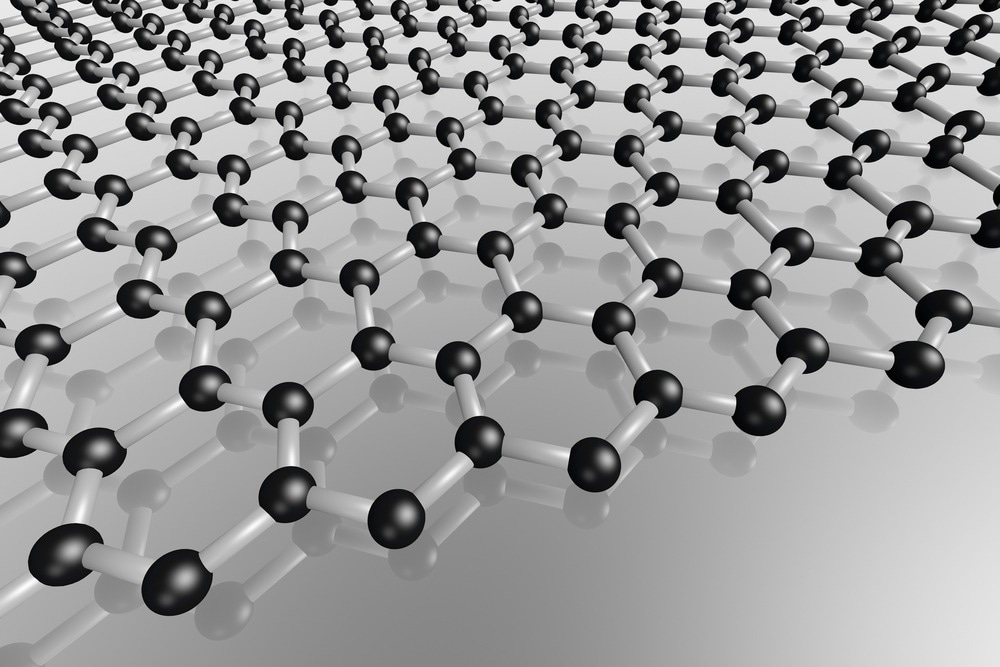Two-dimensional (2D) graphene-based nanomaterials have demonstrated tremendous prospects in biomedical applications owing to their unique physicochemical properties. Intratumorally administered graphene oxide nanosheets have been reported with wide distribution across tumor cells without suppressing their growth in glioblastoma multiforme.

Study: Graphene oxide nanoscale platform enhances the anticancer properties of bortezomib in glioblastoma models.Image Credit: Knorre/Shutterstock.com
Moreover, these graphene oxide nanosheets did not spread to healthy brain tissue, offering multiple prospects for treating and managing patients with glioblastoma multiforme. An article published in the journal Advanced Healthcare Materials presented the kinetics of graphene oxide nanosheet distribution in orthotopic glioblastoma mouse models.
Furthermore, by utilizing graphene oxide nanosheets as nanocarriers, researchers involved in the present work have developed a novel nano-chemotherapeutic method by creating a non-covalent complex of graphene oxide and bortezomib (BTZ), a proteasome inhibitor.
In addition to the high loading capacity of BTZ on the surface of graphene oxide nanosheets, the non-covalent complex showed sustained BTZ biological activity in vitro. Compared to free BTZ, the graphene oxide-BTZ complex showed an improved cytotoxic effect when administered as a single low-volume dose in two orthotopic glioblastoma multiforme mouse models.
Thus, the present study validated the potential of graphene oxide nanosheets as a nanoscale platform for glioblastoma multiforme treatment by increasing the concentration of bioavailable drugs at the target site, thereby enhancing its therapeutic efficiency.
Graphene Oxide-Based Drug Delivery Systems for Treating Glioblastoma Multiforme
Glioblastoma multiforme is an aggressive cancer affecting the central nervous system. Surgical removal followed by radiotherapy and systemic administration of temozolomide (TMZ) is the standard treatment for glioblastoma multiforme.
Despite this combinational approach, it is challenging to completely cure glioblastoma multiforme with a median survival time of 15-18 months. Owing to its invasive and aggressive nature, along with its distinct location in the brain, protected by the blood-brain barrier (BBB), it is difficult to develop an effective treatment for glioblastoma multiforme.
Although various chemotherapeutic agents have been developed to increase the permeability of the BBB, their efficiency in treating glioblastoma is limited by their poor pharmacokinetic profile and systemic toxicity. Therefore, new methods that can achieve higher tumor-specific therapeutic concentrations are highly desirable.
With a proven bio- and neurocompatibility profile, the large surface area of small, thin graphene oxide nanosheets can provide an efficient platform to increase the loading capacity of bioactive molecules and allow excellent colloidal dispersibility in physiological fluids.
Furthermore, graphene oxide has excellent translocation capability within glioblastoma multiforme volume, making it a promising nanocarrier for chemotherapeutic agents.
Graphene Oxide-BTZ Non-Covalent Complex Against Glioblastoma Multiforme
In this study, BTZ-complexed graphene oxide nanosheets were used as a novel, intratumorally injectable, single-dose therapy to treat glioblastoma multiforme. Compared to the free drug, the BTZ-complexed graphene oxide nanosheets showed enhanced anticancer activity in two mouse models of glioblastoma.
Following the injection of graphene oxide nanoparticles into a human U87 xenograft orthotopic mouse model, a remarkable time-dependent diffusion effect was observed across the tumor area without crossing the tumor border, which was consistent with previous findings. The high penetrance of nanometer-thick graphene oxide across the tumor area confirmed its great promise as an efficient drug delivery system.
In a C6 glioma rat model, one study investigated intravenous injection of transferrin-conjugated graphene oxide nanoparticles for delivering doxorubicin. However, multiple doses were required to achieve reasonable tumor inhibition owing to lower drug accumulation at the tumor site, while the majority of the administered dose was amassed at off-target organs. This emphasized the difficulties associated with the systemic treatment of intracranial tumors.
The dose of BTZ used in this study was lower than that used in previous preclinical studies, and it achieved efficacy at a dose lower than the previously reported intratumoral administration of BTZ in orthotopic glioblastoma multiforme mouse models, emphasizing the benefits of employing a nanoscale delivery system.
The encapsulation of BTZ has been previously reported in various nanoscale systems to achieve targeted delivery for cancer treatment, including glioblastoma multiforme. However, these treatment methods require high doses because of their limited accumulation at tumor sites.
In addition to the low dose, graphene oxide nanosheets can rapidly form a non-covalent complex with BTZ, allowing for sustained release of the drug from graphene oxide locally across the tumor area.
Despite the improved anticancer effects realized in this study, the gradual overgrowth of remnant tumors beyond the administered treatment site is a shortcoming shared by other preclinical and clinically applied therapeutic approaches in glioblastoma multiforme.
Conclusion
Overall, the present study demonstrated the efficiency of thin graphene oxide nanosheets as delivery systems for BTZ, which provided a significant anti-tumor effect in vivo in two glioblastoma tumor mouse models.
These findings imply that graphene oxide could be widely used as a delivery system for carrying chemotherapeutic agents and consequently achieving a higher drug concentration at the target site when administered locally. Thus, this study provides an excellent therapeutic strategy that can be used in conjunction with other treatments.
More from AZoNano: Graphene Could Help Meet Net Zero Goals: Here's How
Reference
Sharp, P. S., Stylianou, M., Arellano, L. M., Neves, J. C., Gravagnuolo, A. M., Dodd, A., Barr, K., Lozano, N., Kisby, T., Kostarelos, K., Graphene oxide nanoscale platform enhances the anticancer properties of bortezomib in glioblastoma models. Advanced Healthcare Materials. 2022.
Disclaimer: The views expressed here are those of the author expressed in their private capacity and do not necessarily represent the views of AZoM.com Limited T/A AZoNetwork the owner and operator of this website. This disclaimer forms part of the Terms and conditions of use of this website.